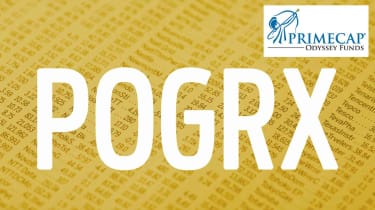mutual funds
The fund trailed the S&P by a wide margin, but over the long haul Primecap’s managers have not disappointed shareholders. The managers at Primecap Oydssey Growth (POGRX) like to focus on what they do best – pick stocks – and they typically don’t talk to reporters.
So once a year, when the fund’s annual report comes out, we read every word. Over the past 12 months, Kiplinger 25 member Odyssey Growth gained 12.7%, which trailed the 24.7% gain in the S&P 500.
We’re not worried. Short-term returns can be instructive and add some perspective, but long-term performance matters most.
And over the long haul, Primecap’s managers have not disappointed shareholders. The fund’s 15-year annualized return, 11.3%, beat the S&P 500 by an average of 0.7 percentage point per year.
But 2021 was a win-some, lose-some year for the fund. Some of the fund’s top 10 holdings generated market-beating returns. Shares in banking giant Morgan Stanley (MS), for instance, gained 42% over the past 12 months. Other top holdings jumped even higher: Eli Lilly (LLY) was up 59%; Alphabet (GOOGL), 54%; and Microsoft (MSFT), 45%.
Biotech Stocks StumbleBut the fund holds 15% of assets in biotech stocks – a chunk, relative to the 2% exposure in the S&P 500 – which pressured results.
Biotechnology was the worst-performing slice of the health industry over the past 12 months, thanks in part to drug-pricing concerns and regulatory issues.
Epizyme (EPZM) dropped 81% over the past 12 months after an “anemic” new drug launch, the Primecap managers reported. And FibroGen (FGEN) stumbled, too, losing 66% after clinical missteps and regulatory setbacks.
China proved to be a snag as well. The fund has a significant stake in Alibaba (BABA), the Amazon of China, and the stock slipped 43% over the past 12 months because of increased government scrutiny.
The fund’s five managers divide and run a portion of the fund’s assets independently. But they all favor stocks in fast-growing firms with long-term growth potential that they think the market has underestimated. When they buy, they tend to hold. The fund’s 7% turnover implies a typical holding period of more than a decade. They’re patient and willing to wait for their investment thesis to play out. We’ll wait with them.
